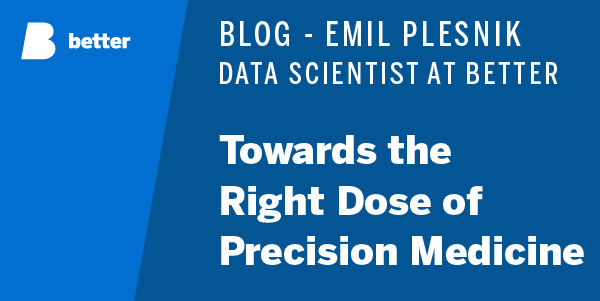ehealth
Proper dose for each patient: a key step for precision medicine
Determining the optimal medication dose for an individual patient is challenging, as no two patients are the same in the sense of drug absorption, distribution, and clearance. The dosing decision is a complex one, especially for medications with narrow therapeutic ranges, but also for patients with impaired physiological functions and comorbidities. To add to the challenge, clinicians now face this dilemma on a daily basis in busy health environments.
Conventional vs. precision dosing
The conventional dosing strategy used for most medications is either a fixed method (for example, X mg every 12 hours), or a covariate-based dose adjustment (for example, a dose based on weight). These methods are often not precise enough to achieve the optimal therapeutic effect or prevent adverse effects. To optimise dosing, model-informed precision dosing is recommended. This approach determines the right dose for each patient based on multiple factors such as age, weight, gender, genetics, lifestyle, diet, and metabolism. Once implemented, its vital role is referred to as therapeutic drug monitoring (TDM). TDM is the feedback strategy of adjusting the dosing regimen based on plasma drug concentration measurements, which represent additional information to guide the medication therapy. The main advantage of applying TDM is the ability to use the right dose with an increased drug effect, but reduced adverse effects, all of which improves patient outcome and safety.
Optimizing drug dosage
Therapeutic drug monitoring can be further enhanced by applying Bayesian statistical methods to predict patient plasma drug concentrations. The required values for a Bayesian prediction of plasma drug concentrations are: the known population pharmacokinetic model for the applied drug, a patient’s demographics, and at least one measured plasma drug concentration which is sampled at a random time within a dosing interval. With additional plasma drug concentration samples, the accuracy of predictions improves.
Consequently, Bayesian TDM enables the simulation and optimisation of dosing strategies in less time, with improved accuracy, and without the need for regular sampling of plasma drug concentrations. When applying Bayesian TDM, a clinician starts by selecting the correct drug and drug model for the patient being treated. Then, patient demographics relevant to the selected pharmacokinetic model are entered into the system along with dosing details and at least one measured plasma drug concentration. An optimal drug dosage strategy is then selected from among the simulations. The dosing strategy is then further improved with the feedback the system receives from additional plasma drug concentration samples. This method is successful as it allows the patient’s doctor to learn about the causes of an individual patient’s response.
Studies’ reports
Individualised precision dosing using Bayesian TDM is becoming a current practice for anticoagulants, aminoglycosides, chemotherapeutics, immunosuppressants, and antiepileptics. In connection with Bayesian dosing, clinical studies have reported that:
- individualisation for anticoagulation therapy increased therapeutic effectiveness by up to 40 % when applying warfarin, and by more than 25 % when applying enoxaparin, compared with conventional dosing methods;
- Bayesian TDM of aminoglycosides has resulted in higher antibiotic efficacy, shorter hospitalisation, reduced incidences of toxicity, and has enabled the achievement of safe and effective doses in 30 % more patients than covariate guided dosing;
- TDM in chemotherapy can improve outcomes in leukaemia patients by up to 10 % compared with conventional dosing, and can also significantly reduce methotrexate and carboplatin toxicity;
- TDM has proved successful in immunosuppressive therapy. For example, it enabled up to 25 % more patients to achieve target concentrations compared with conventional dosing in tacrolimus therapy after liver transplantation, and up to 20 % more patients achieved target concentrations compared with conventional dosing in tacrolimus therapy after renal transplantation;
- TDM proved successful for antiepileptic drugs. For example it increased the number of patients within therapeutic range for phenytoin by 30 % compared with conventional dosing.
Future developments
Because all of these advantages, our development at Better is focused also on bringing precision dosing in practice to further assist the healthcare professionals. Establishing an open data and open-standards-based platform is vital to enable reliable and secure access to the required data, and to encourage the implementation of patient-centred applications for medication management and precision dosing.
This is a crucial facilitator for applying optimal dosing regimens, a key milestone for achieving the optimal treatment for each patient, and a decisive step towards precision medicine.
